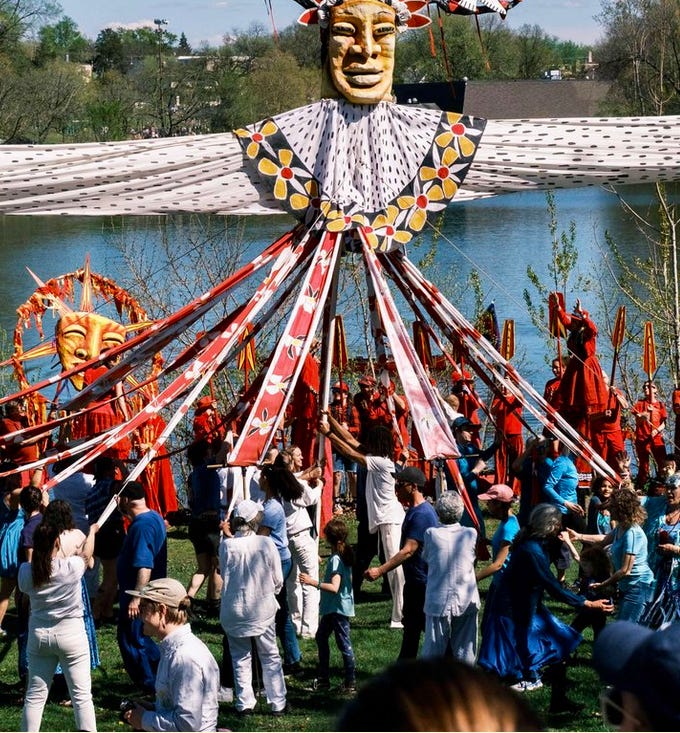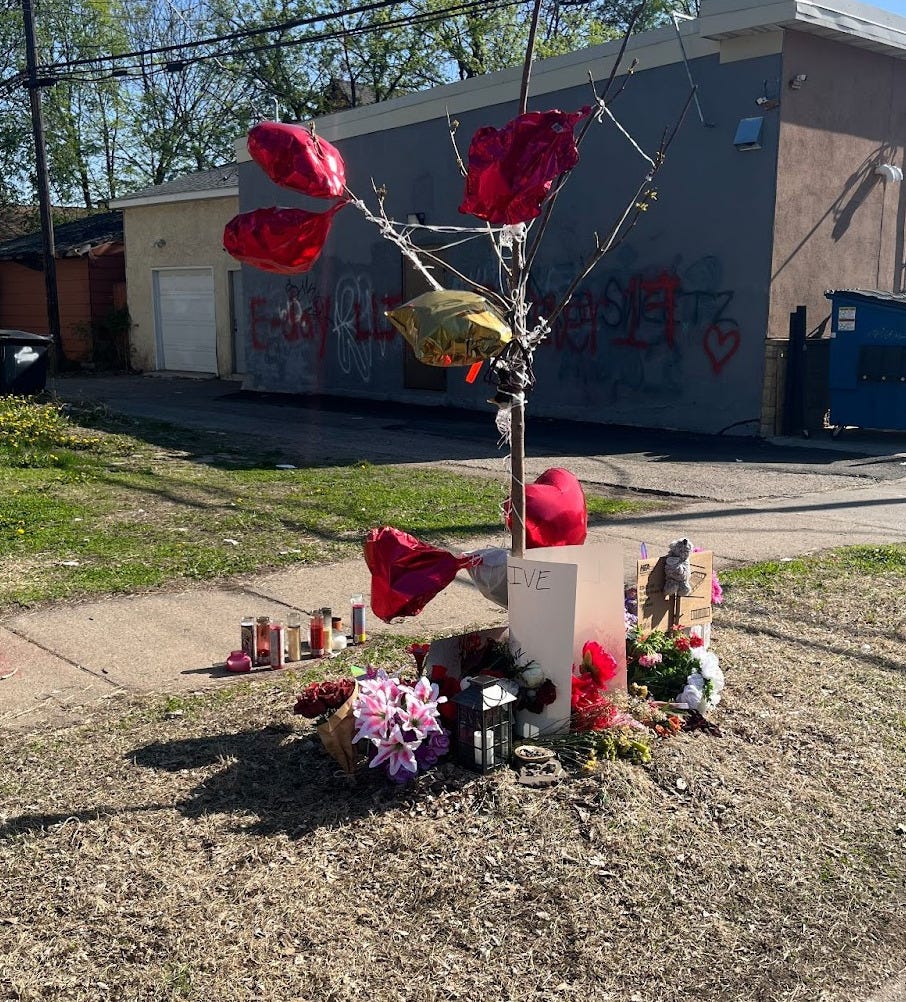
This past Monday morning, as I moved lawn chairs from the front yard to their normal resting spot on our back deck, I noticed I wasn’t the only neighbor sharing in a similar ‘day after’ return to normal. Sunday had been the annual Powderhorn Park May Day Parade. It is the biggest event of the year here, and thousands of neighbors gather - many on our front walk and boulevard - to celebrate spring and enjoy the many eclectic aspects of the parade - especially the Southside Steam Train. Most then head one block over to the park itself to enjoy a ritual of welcoming the sun, as well as a variety of vendors, people and music. There is also a block party just off the park with beer and live bands throughout the day and evening.
So it is no surprise there are ‘day after’ activities. Yards re-assembled, “No Parking” signs removed, trash picked up, street barricades returned to storage, and costumes put away. I was surprised to see that Sam, our postal carrier, was working on that day. He’s also in the Brass Solidarity band which had a very full schedule over the weekend. Since he’s older than me, I thought he might take a day to savor and recover, although I know the music energizes him. Of course, the joy and amazement will remain in our hearts for months, as we join so many others in appreciating the diversity and energy of this southside neighborhood with all kinds of festivals and gatherings throughout the year.
There was a different kind of ‘day after’ just a block from where the parade started. During the week prior to the parade, 4 Native American young adults (Evan, Joseph, Merelle, Leras) were murdered in what police believe was a targeted killing. Very quickly an impromptu memorial altar of balloons and flowers emerged. Indigenous drumming and prayers were offered at another nearby park.
It’s hard to fathom what the ‘day after’ effects are of such violence. Each of those young people were loved by their families and friends. Each had colleagues and former classmates. Already, one senses the ripple effect within the neighborhood and the wider community. There will be a few stories in the local news (someone was arrested and arraigned even before I began writing), but mostly the violence will be born in silence and the grief experienced in private. Even those of us who have not experienced such violence know there will never be a day that isn’t the ‘day after.’ Holes will remain in hearts forever.
I know this because years ago someone who lost a young adult son in a tragic car accident said there was never a day he didn’t think about his son. He made the remark in response to others being afraid to speak about his son for fear of causing more pain. “I think about him everyday,” he commented, “your bringing him up won’t cause me to suddenly remember I lost a son. Rather, by naming him, you’ll keep his memory alive.”
While the juxtaposition of these two events was unique to this spring in our neighborhood, the juxtaposition of very different kinds of ‘day after’ experiences is actually quite common. The day after a grandparent dies, a grandchild is born. The day after a hail storm that breaks car windows, the sun shines brightly.
One of my experiences of our current social and political climate is that little attention is paid to what happens in the wake of hate speech, drastic funding cuts, or off handed comments that have no basis in scientific theory. Those with the power to make decisions and those who are often quoted at news conferences have little regard for the impact of their words on the lives of others. Potentially millions of others. Little regard for the financial and emotional impact of receiving an email that says you are fired, with no reason given. Little regard for how the acceptance of hate speech might impact a group of school children, their teachers or their parents. Little regard for how the pushing of well debunked conspiracy theories might actually cause the death of children that could be prevented.
The Hebrew Bible, in Exodus, references that the ‘sins of the father’ will have an impact for 3-4 generations. The ancient Haudenosaunee (Iroquois) philosophy noted that the decisions we make today should result in a sustainable world seven generations into the future. What both recognize is that our actions today have an impact far beyond what we can imagine.
As we live into the ‘days after’ of each of our lives, I find it helpful to remember that just as there is generational trauma, there are generational blessings. Just as the pain reverberates in our bodies and memories, so do the joyful, the life giving, and the celebratory events and experiences live far beyond the moment we experience them. It’s too much to expect we can take away the pain, but is it too much to think our investment in sustainable joy will not change the world? Is it too much to think our dancing in the streets, our laughter with children or our prayers of gratitude for the arrival of another season are shaping us and the reality of those around us?
Where are you investing in joy, celebration and love?
How are you sustained by the love, blessing, and generosity of those who’ve gone before you?







Share this post